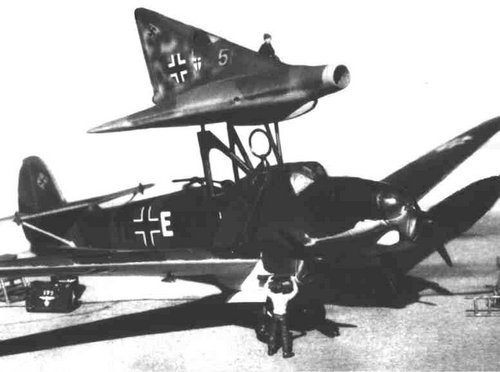Nazi Germany's only coal-powered fighter
The P13A fighter used coal-fired jet engines to cope with Nazi Germany's fuel shortages.
 |
P13A model during testing. Photo: Luft 46 Models. |
At the end of World War II, Nazi Germany wantedto build a high-speed, powerful, low-cost fighter jetagainst Allied bombers. One of the challenges they faced was the shortage of aviation fuel, according toVintage News.
To overcome this situation, at the end of 1944, Dr. Alexander Lippisch proposed the idea of building a coal-powered interceptor P13A. Accordingly, a mesh basket filled with coal would be attached behind the air intake and burned with gas, creating thrust for the fighter.
The P13A was a top-secret German aircraft project. It used a delta wing design and a ramjet engine. The P13A was only available in a single-seat version, capable of reaching a top speed of 1,650 km/h and a range of 1,000 km thanks to a Kronach Lorin coal-fired ramjet engine.
According to Lippisch's design, tThe rock is crushed into small particles so that it can burn evenly, and is contained in a circular mesh basket that can rotate around a vertical axis. A jet engine will blow fire into the mesh basket as soon as the P13A reaches cruising speed.
However, the use of a ramjet engine forced the P13A to rely on rocket boosters or other aircraft towing before activating the cruise engines.According to the proposal, the P13A could be made from wood, plywood and steel pipes to reduce weight. This fighter modelEquipped with two 7.92 mm or 13 mm machine guns.
Some wind tunnel tests conducted by Germany have shown that the P13A can operate well at speeds of 3,675 km/h, three times the speed of sound.
However, Germany did not have time to complete thethis project before the war ended.In fact, only the DM-1 experimental glider was built and was confiscated by the US military. The US asked Dr. Lippisch's team to complete this glider before bringing it back to the country for testing with very positive results.
After the war, Dr. Lippisch worked with the Convair design team to produce the XF-92 prototype, which evolved into the F-102 Delta Dagger and F-106 Delta Dart interceptors. The DM-1 test results were later used in NASA aircraft research in the 1950s.
According to VNE
| RELATED NEWS |
|---|

